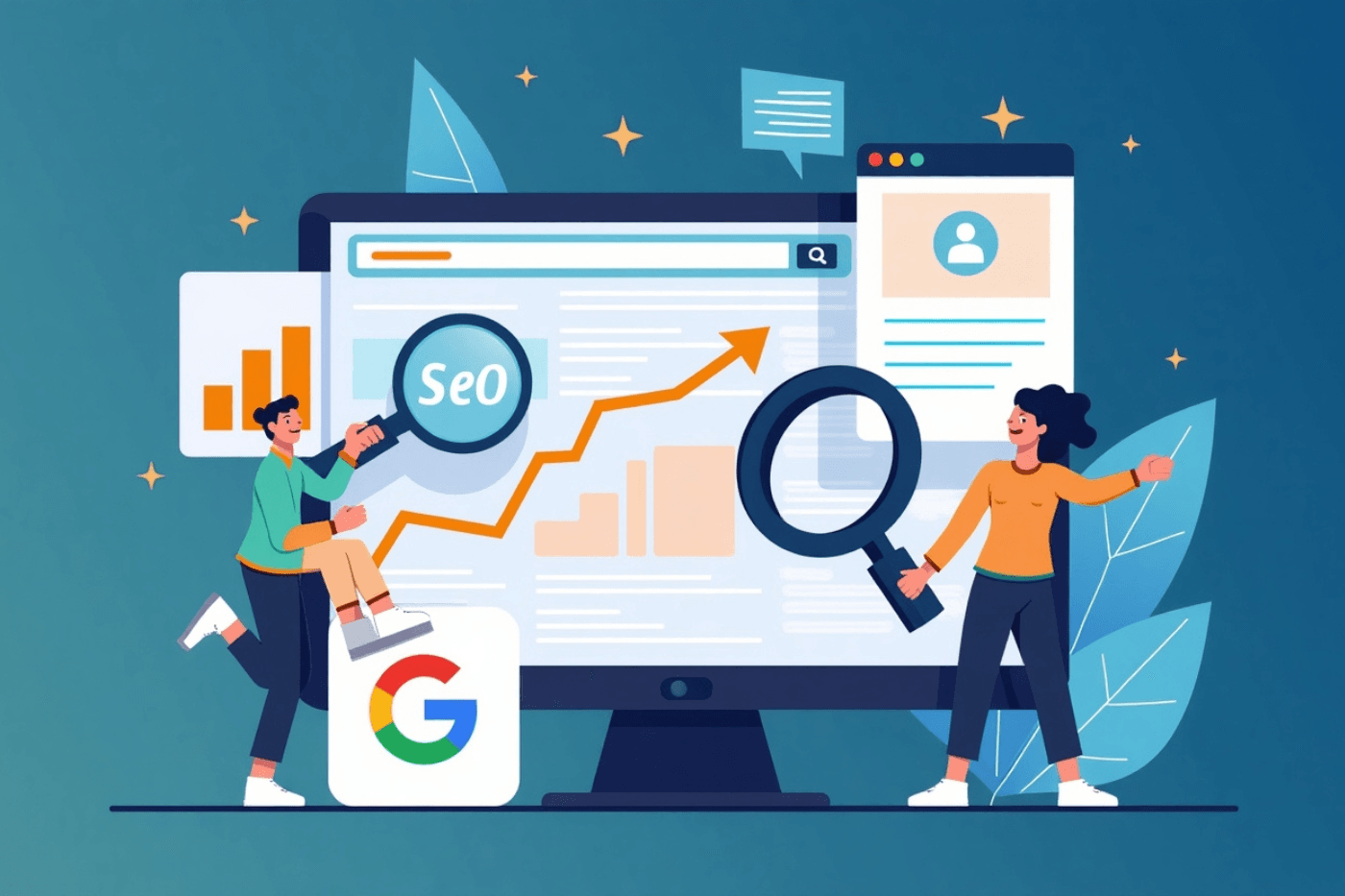
Dominating Social: Organic vs. Paid Social Media Growth in 2025
May 26, 2025
Table of Contents
- Introduction
- Understanding Organic Social Media Growth
- The Power of Consistent Content
- Engaging with Your Audience
- Leveraging Hashtags Effectively
- Building a Community
- The Long-Term Game
- Unlocking Growth with Paid Social Media Marketing
- Precision Targeting Capabilities
- Amplifying Reach and Visibility
- Generating Leads and Conversions
- Data-Driven Insights and Optimization
- Scalability and Speed
- The Synergy: Combining Organic and Paid Strategies
- What Works Best in 2025? Key Considerations
- Your Business Goals
- Your Target Audience
- Your Budget
- The Competitive Landscape
- Platform-Specific Trends
- Conclusion
- Frequently Asked Questions (FAQs)
1. Introduction
In the dynamic realm of digital marketing, social media stands as a pivotal arena for businesses seeking growth and connection. As we navigate towards 2025, the question of how to best leverage social platforms remains central: Is organic reach sufficient, or is paid social media marketing the key to unlocking substantial growth?
For businesses striving to establish a strong online presence, the debate between organic and paid social media strategies is a crucial one. Organic growth, built on authentic content and community engagement, offers a sustainable, long-term approach. Conversely, paid social media marketing provides the tools for rapid amplification, precise targeting, and measurable results.
As Aashutosh Gupta, a digital marketing freelancer and the founder of Digital Aashutosh, I’ve guided numerous businesses through the complexities of social media growth. I understand that there’s no one-size-fits-all answer. The optimal strategy often involves a thoughtful blend of both organic and paid efforts, tailored to specific business objectives and target audiences.
This blog post will delve into the intricacies of both organic and paid social media marketing, exploring their individual strengths and weaknesses. We will analyze what works best in the current digital climate, considering the evolving algorithms, user behaviors, and platform trends of 2025. By the end of this discussion, you’ll have a clearer understanding of how to strategically allocate your resources and build a social media presence that truly drives results.
2. Understanding Organic Social Media Growth
Organic social media growth refers to the process of gaining visibility, engagement, and followers on social media platforms without directly paying for advertising. It’s about building genuine connections with your audience through valuable content, consistent interaction, and community building. While it requires time and effort, a strong organic presence can foster brand loyalty and long-term sustainability.
The Power of Consistent Content
At the heart of organic growth lies the creation and consistent sharing of valuable content. This content can take various forms, including informative posts, engaging videos, captivating images, thought-provoking articles, behind-the-scenes glimpses, and user-generated content. The key is to provide content that resonates with your target audience, addresses their needs, answers their questions, or entertains them. Consistency is crucial; a regular posting schedule keeps your audience engaged and signals to platform algorithms that your page is active and relevant.
Engaging with Your Audience
Organic social media is a two-way street. Simply posting content is not enough; you need to actively engage with your audience. This involves responding to comments and messages promptly, asking questions to encourage interaction, running polls and quizzes, and fostering discussions. Building a community around your brand requires active participation and genuine interest in your followers. When your audience feels heard and valued, they are more likely to become loyal advocates for your brand.
Leveraging Hashtags Effectively
Hashtags are powerful tools for increasing the discoverability of your organic content. They categorize your posts and allow users interested in specific topics to find your content. Research relevant hashtags within your niche, combining broad and specific terms. Use a mix of trending and niche-specific hashtags to maximize your reach. However, avoid over-stuffing your posts with irrelevant hashtags, as this can be perceived as spammy. Strategic and relevant hashtag usage can significantly expand the organic reach of your content.
Building a Community
True organic growth often culminates in the creation of a thriving community around your brand. This involves fostering a sense of belonging among your followers, encouraging interaction between them, and creating spaces for discussion and shared interests. A strong community not only amplifies your organic reach through word-of-mouth but also provides valuable feedback and insights into your audience’s needs and preferences.
The Long-Term Game
Organic social media growth is a marathon, not a sprint. It takes time, consistency, and genuine effort to build a substantial following and achieve significant organic reach. While the results may not be immediate, the connections and brand loyalty built through organic strategies tend to be more sustainable and resilient in the long run. It’s about cultivating relationships and establishing your brand as a trusted voice within your industry.
3. Unlocking Growth with Paid Social Media Marketing
Paid social media marketing
On the other hand, involves leveraging the advertising features offered by social media platforms to reach a wider and more targeted audience. By investing a budget, businesses can amplify their content, target specific demographics and interests, and drive specific actions, such as website visits, lead generation, or sales.
Precision Targeting Capabilities
One of the most significant advantages of paid social media marketing is its sophisticated targeting capabilities. Platforms like Facebook, Instagram, LinkedIn, and Twitter offer granular targeting options based on demographics, interests, behaviors, and even custom audiences (e.g., email lists, website visitors). This precision allows you to deliver your message to the exact people who are most likely to be interested in your products or services, maximizing the efficiency of your ad spend.
Amplifying Reach and Visibility
While organic reach has become increasingly challenging due to algorithm changes, paid social media marketing offers a direct way to amplify your reach and ensure your content is seen by a larger audience. This is particularly valuable for reaching new potential customers who may not be following your page yet. Paid campaigns can significantly boost brand awareness and introduce your offerings to a wider pool of relevant users.
Generating Leads and Conversions
Paid social media marketing is highly effective for driving specific business outcomes, such as lead generation and conversions. Through targeted ad campaigns and compelling calls to action, businesses can direct users to landing pages, lead capture forms, or e-commerce stores. The ability to track conversions directly within the platform allows for precise measurement of ROI and optimization of campaigns for maximum results.
Data-Driven Insights and Optimization
Paid social media platforms provide robust analytics and reporting tools that offer valuable insights into campaign performance. You can track key metrics such as reach, engagement, click-through rates, and conversions. This data allows you to understand what’s working and what’s not, enabling you to optimize your campaigns in real-time for better results. A/B testing different ad creatives, targeting options, and placements is crucial for continuous improvement.
Scalability and Speed
Compared to organic growth, paid social media marketing offers scalability and speed. You can quickly scale your reach and impact by increasing your ad budget. This makes it a valuable tool for businesses looking to achieve rapid growth or promote specific campaigns with urgency. While organic growth is a gradual process, paid campaigns can deliver immediate visibility and results.
4. The Synergy: Combining Organic and Paid Strategies
The most effective social media strategies often involve a strategic blend of both organic and paid social media marketing. These two approaches are not mutually exclusive but rather complementary.
A strong organic presence provides the foundation of trust and authenticity. When you then amplify your best organic content or run targeted paid campaigns to reach new audiences, the credibility established through your organic efforts can significantly enhance the effectiveness of your paid ads.
Conversely, insights gained from your paid social media marketing campaigns can inform your organic strategy. Understanding which audiences and creatives resonate best through paid testing can help you tailor your organic content for greater impact.
Think of it this way: your organic content nurtures your existing audience and builds brand loyalty, while your paid campaigns act as a catalyst for reaching new potential customers and driving specific business goals. The synergy between these two approaches creates a powerful and well-rounded social media strategy.
5. What Works Best in 2025? Key Considerations
Determining whether organic or paid social media marketing works best in 2025 depends on several key factors specific to your business and the evolving digital landscape:
Your Business Goals: Are you primarily focused on brand awareness, lead generation, direct sales, or community building? Different goals may necessitate a heavier emphasis on either organic or paid strategies. For rapid lead generation or sales, paid social media marketing often provides a more direct route. For long-term brand building and community engagement, organic efforts are crucial.
Your Target Audience: Where does your target audience spend their time online? Understanding their platform preferences and online behaviors will influence where you should focus your efforts, both organically and through paid advertising. Some audiences may be more receptive to organic content on certain platforms, while others may be more effectively reached through targeted ads.
Your Budget: Paid social media marketing requires a financial investment. Your available budget will significantly impact the scale and scope of your paid campaigns. Organic efforts, while requiring time and resources, have no direct advertising costs. It’s essential to align your budget with your goals and choose strategies that offer the best potential ROI.
The Competitive Landscape: Analyze what your competitors are doing, both organically and through paid advertising. This can provide valuable insights into effective strategies within your industry. If your competitors are heavily investing in paid social media marketing, you may need a paid strategy to remain competitive in terms of visibility.
Platform-Specific Trends: Social media platforms are constantly evolving, with new features, algorithm updates, and shifting user behaviors. Staying informed about these trends is crucial for both organic and paid strategies. For example, the increasing emphasis on video content and short-form video formats like Reels and TikTok requires adapting your content strategy accordingly. Algorithm changes can also impact organic reach, potentially making paid social media marketing a more reliable way to ensure visibility.
In 2025, a data-driven approach will be more critical than ever. Regardless of whether you lean more towards organic or paid, tracking your results, analyzing your performance, and continuously optimizing your strategies based on data will be paramount for success.
6. Conclusion
In the landscape of 2025, the question of organic versus paid social media marketing isn’t about choosing one over the other, but rather understanding how to leverage both effectively. Organic social media builds a strong foundation of community and trust through consistent, valuable content and genuine engagement. Paid social media marketing provides the tools for targeted reach, rapid amplification, and measurable results in driving specific business objectives.
The most successful social media strategies in 2025 will be those that strategically integrate both organic and paid efforts, tailored to specific business goals, target audiences, and platform dynamics. By understanding the strengths of each approach and how they can complement each other, businesses can unlock sustainable growth and achieve their marketing objectives in the ever-evolving social media landscape.
As Digital Aashutosh, I am committed to helping businesses navigate these complexities and develop tailored social media strategies that drive real results. Let’s work together to harness the power of both organic and paid social media to elevate your brand in 2025 and beyond.
7. Frequently Asked Questions (FAQs)
- Is organic social media dead? No, organic social media is not dead, but its reach has become more challenging due to algorithm changes. It remains crucial for building community, establishing brand voice, and fostering long-term relationships with your audience.
- Is paid social media marketing worth the investment? Yes, when implemented strategically, paid social media marketing can deliver significant ROI through targeted reach, lead generation, and conversions. However, it’s crucial to have clear goals, a well-defined target audience, and compelling ad creatives.
- How much should I spend on paid social media marketing? The ideal budget for paid social media marketing varies greatly depending on your business goals, industry, target audience, and competition. It’s often best to start with a test budget, analyze the results, and scale accordingly.
- Can I achieve significant growth with just organic social media? While challenging, significant growth through organic social media is possible with consistent effort, high-quality content, strong community engagement, and a deep understanding of your target audience and platform algorithms. However, it typically takes more time and effort compared to paid strategies.
- What are the key metrics to track for organic social media? Key metrics for organic social media include reach, engagement rate (likes, comments, shares), follower growth, website clicks from your profile, and sentiment analysis of comments.
- What are the key metrics to track for paid social media marketing? Key metrics for paid social media marketing include impressions, reach, click-through rate (CTR), cost per click (CPC), conversion rate, cost per acquisition (CPA), and return on ad spend (ROAS).
- Ultimately, a winning social media strategy in 2025 hinges on strategically blending the authentic connection of organic efforts with the targeted power of paid campaigns, tailored precisely to your unique business objectives. Let Digital Aashutosh guide you in crafting this powerful synergy for optimal growth.
Previous Post
Recent Posts
Categories

Your trusted partner in achieving digital marketing success through innovative strategies and personalized solutions.


